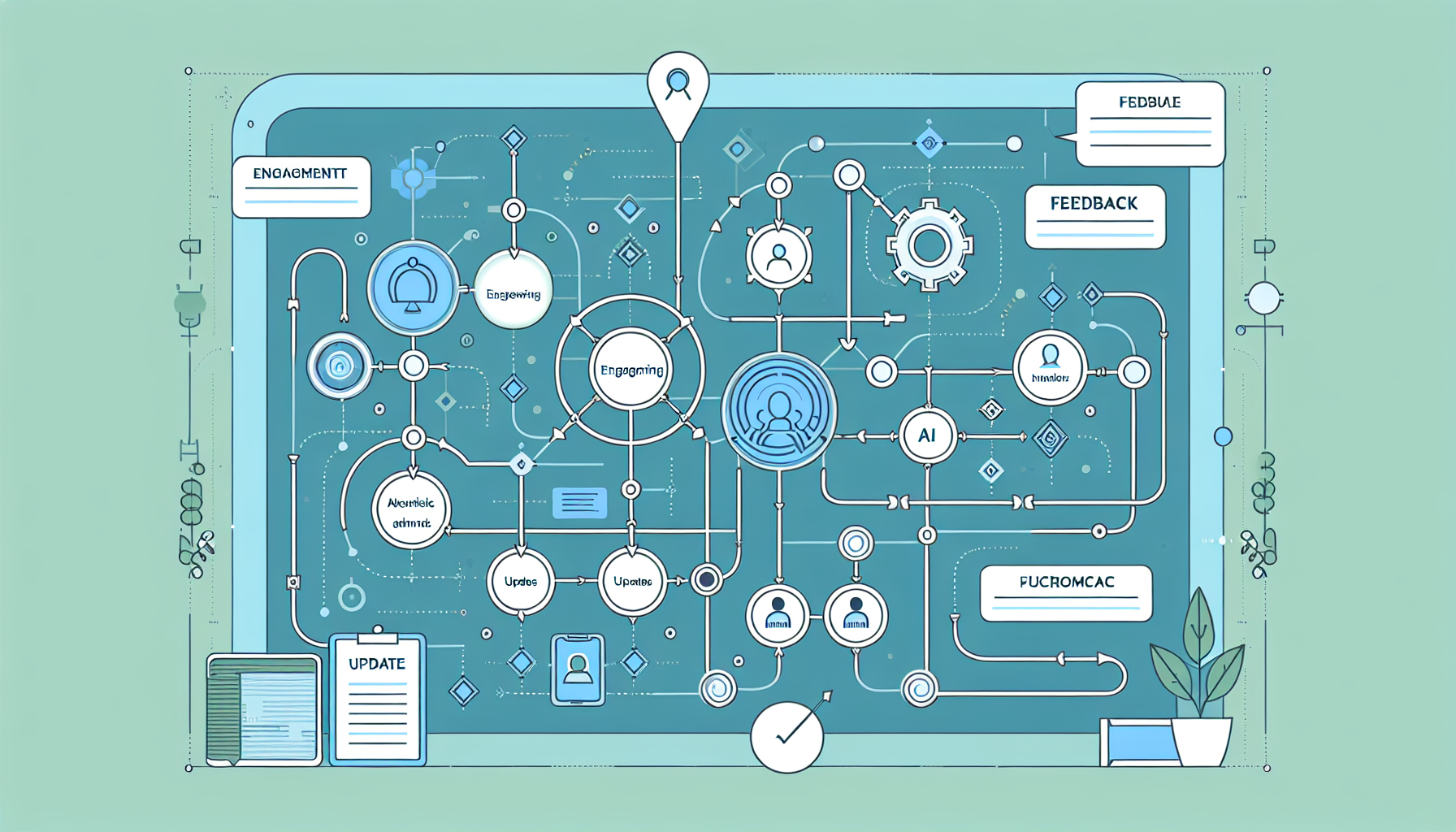Ever felt overwhelmed trying to build an AI course? You’re definitely not alone! Navigating the sea of content can be tricky, and many course creators find it challenging to organize their materials effectively.
But hang on! If you stick around, I’ll share some insights on content mapping that can truly simplify your course development journey. You’ll discover how it can enhance learner engagement and ensure everything flows smoothly.
From understanding what content mapping is to exploring the tools and best practices, we’re about to dive in. Let’s make your AI course creation not just easier but also a lot more effective!
Key Takeaways
- Content mapping is a strategy to organize course content for better learner experiences.
- It improves engagement by logically structuring information, helping students stay on track.
- Mapping enhances course flow, making transitions between lessons smoother and more intuitive.
- Start content mapping by defining your audience, learning goals, and organizing topics logically.
- Use tools like MindMeister and Lucidchart for visual mapping, or Coggle and Canva for free templates.
- Keep your content map clear and simple, and update it based on evolving industry needs.
- Involve learners in the mapping process to gain valuable feedback and insights.

What is Content Mapping in AI Course Creation?
Content mapping in AI course creation is a strategic approach to organizing and structuring course content to enhance the learner’s experience and meet educational goals.
It involves outlining the key topics, subtopics, and associated materials, ensuring that everything aligns with the desired learning objectives.
Think of it as a roadmap for your course that guides both instructors and learners through the vast landscape of information.
The importance of content mapping cannot be overstated; it serves as the backbone of effective course development, helping to create a compelling and coherent educational journey.
Benefits of Content Mapping for AI Courses
One of the main benefits of content mapping in AI courses is improved learner engagement.
By organizing information logically, you allow students to follow along easily, making it less likely they’ll feel lost or overwhelmed.
Another critical advantage is enhanced course structure and flow; when topics are well-mapped, transitions between lessons become smoother and more intuitive.
This not only elevates the overall learning experience but also keeps students motivated to continue. Plus, content mapping ensures better alignment with learning objectives.
Each section of the course can be directly tied to specific goals, so you know you’re on track and can quantify success more effectively.

Steps to Create a Content Map for AI Courses
Creating a content map for your AI course might seem daunting at first, but it’s really about breaking it down into manageable steps.
First, identify your target audience and their needs.
Knowing who your learners are will guide the content you create, ensuring it’s relevant and engaging.
Next, define your learning goals and objectives.
These should be clear and measurable, giving your course a focused direction.
Once your objectives are in place, it’s time to organize your topics and subtopics.
Arrange them logically, like stacking building blocks, so that one concept naturally leads into the next.
Lastly, choose suitable content formats like videos, quizzes, and articles.
Mixing different formats not only caters to various learning styles but also keeps things fresh and exciting for your learners.
Tools and Resources for Content Mapping
When it comes to content mapping, the right tools can make all the difference.
There are various software and platforms available that can help streamline the process.
For instance, programs like MindMeister or Lucidchart allow you to visualize your content map easily.
If you’re looking for free resources, platforms like Coggle and Canva also offer templates that can kickstart your content mapping journey.
Additionally, consider checking out existing content mapping templates available online.
These examples can spark creative ideas and provide a benchmark for your own course design.
Best Practices for Effective Content Mapping
To create a truly effective content map, there are some best practices you’ll want to keep in mind.
First, keep it simple and clear.
Cluttered maps can confuse, so focus on clarity and ensure that your ideas flow logically.
It’s also essential to regularly review and update your content maps.
As the industry and technology evolve, your course content might need adjustments too.
Involving learners in the mapping process can be very beneficial.
Their feedback can provide valuable insights that you might not have considered.
Don’t hesitate to ask for input; after all, they are the ones experiencing the course!

Common Mistakes to Avoid in Content Mapping
When it comes to content mapping, some common pitfalls can derail your efforts and leave you with a confusing course structure.
One such mistake is overcomplicating the map; remember, the goal is simplicity.
A cluttered or overly detailed map can confuse both you and your learners, making it harder to follow the course flow.
Another mistake is ignoring learner feedback; if you’re not listening to what your audience thinks, you might miss crucial insights.
Engaging your learners and incorporating their suggestions can lead to a more tailored course experience.
Lastly, neglecting to update content as needed is a big no-no.
Courses can become outdated very quickly, especially in the fast-paced field of AI.
Regularly revising your content map ensures that your course remains relevant and effective.
Case Studies: Successful Content Mapping in AI Courses
Looking at real-world examples of effective content mapping can provide inspiration and practical lessons.
One notable example is an AI course offered by Stanford University, where the content map was meticulously organized to enhance learner engagement.
The course structure allowed for seamless transitions between theoretical concepts and practical applications, making the learning experience cohesive.
Another impressive case is an online course by Coursera that utilized a dynamic content map to adapt to learner needs.
This approach allowed the instructors to modify the course flow based on feedback and performance metrics.
The lessons learned from these cases emphasize the importance of structure, flexibility, and continuous improvement in content mapping.
Conclusion: Making the Most of Content Mapping for AI Course Success
In conclusion, content mapping serves as a vital foundation for creating successful AI courses.
It fosters improved learner engagement, streamlined course flow, and better alignment with educational outcomes.
By following the steps to create an effective content map and avoiding common mistakes, you can enhance the overall learning experience.
Remember to leverage available tools and resources, engage your learners, and continuously adapt your course content.
Making content mapping a core part of your course design strategy will undoubtedly lead to more successful and fulfilling educational journeys for both you and your students.
So, roll up your sleeves and start mapping your way to course creation success!
FAQs
Content mapping is the process of organizing course content systematically to ensure effective delivery and learning. It helps instructors align material with course objectives and facilitates better engagement and understanding among learners.
Benefits include improved learner engagement, enhanced structuring and flow of the course, and better alignment with learning objectives. This makes courses more coherent and helps learners achieve their goals effectively.
Key steps include identifying the target audience and their needs, defining learning goals, organizing course topics, and selecting suitable content formats. This structured approach ensures clarity and effectiveness in course delivery.
Common mistakes include overcomplicating the content map, ignoring learner feedback, and failing to update content regularly. Avoiding these pitfalls ensures that the mapping process remains relevant and effective for learners.
